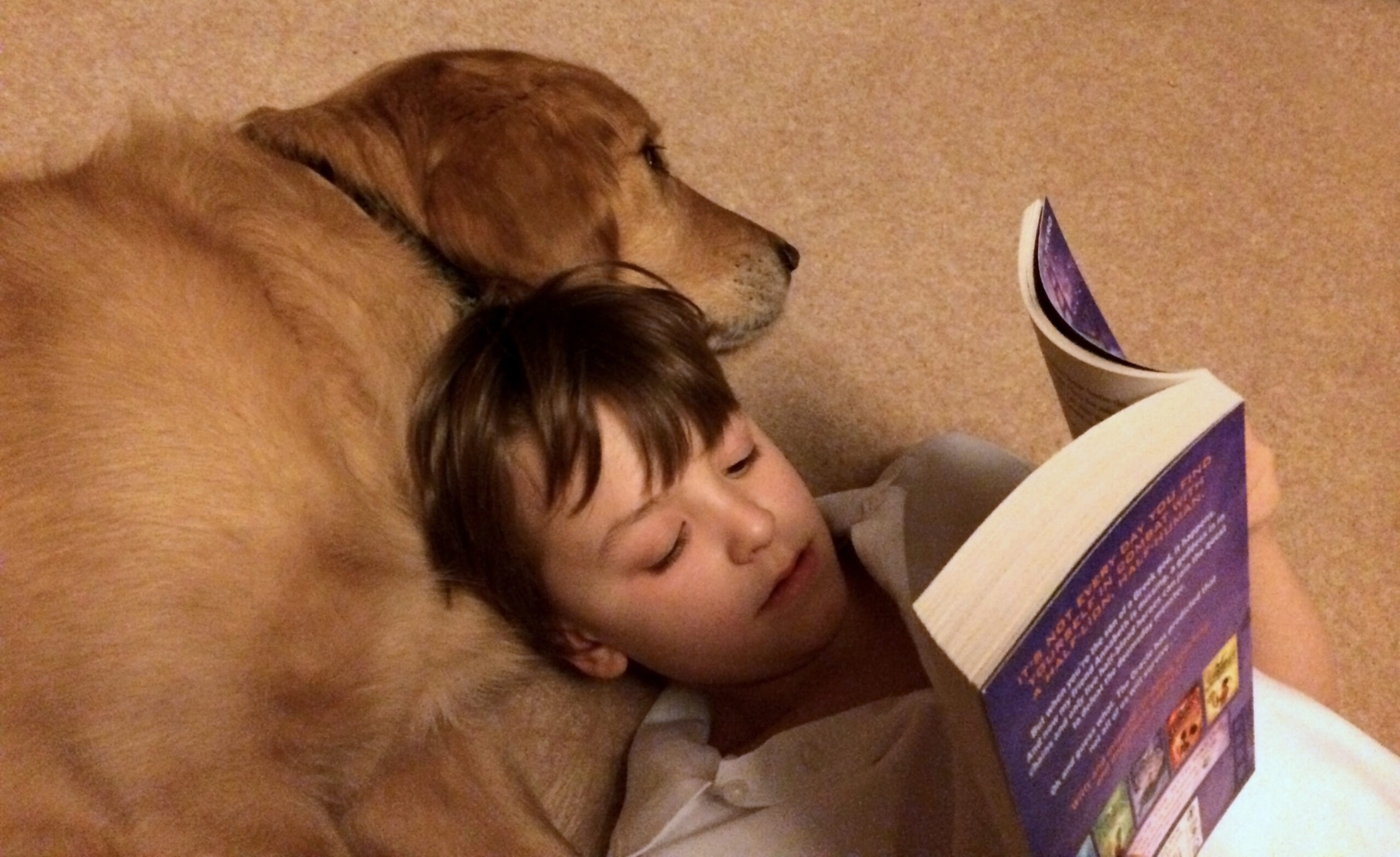A mission to ensure every child reads enough
The reason that I’ve been silent on my blog recently, is that my writing-motivation (aka ‘bedtime reading’) slot has been filled by writing a few books for children. The aim was to create interesting stories for older children with low reading ages: high interest age/low reading age. I chose Doug Merlin (our two dogs!) as a pseudonym, and if you are intrigued, search it on Amazon. (Any profits go to charity- my favourite is Magic Heart).
However, this blog is not about those books, but rather the research behind the Sparx Reader project which highlighted this void in children’s literature. As I said in the “Setting things straight…” post, I have spent hundreds of hours in the classroom trying to work out how to improve engagement and motivation in maths. At the same time, I witnessed many independent reading sessions, and it struck me that the engagement problem during reading was even bigger than in maths.
So I HAD to do something to help get kids reading. It’s even more important than maths.
The issue is neatly highlighted in these excerpts from a podcast interview of Katharine Birbalsingh, head of the exceptional Michaela school,
” A key thing that we are keen to improve on is reading. Our kids don’t read enough. We’ve been trying all sorts of things over the years…. A lot of them find it difficult to read even a couple of paragraphs. How do you get kids who come to you at age 11, who are not at their chronological reading age….. And we’ve tried everything….”
She concludes that section of the podcast by saying.
“It’s not something that I would say that we have managed to achieve. It’s very very hard and reading is so important.”
I came to the same conclusion for other schools. Even when the class was quiet and students were staring at their books, it was clear that many were not reading. What made this feel worse was that the ‘end of book quizzes’ were often giving teachers the false impression that they had read the books. A bit of undercover research showed that students commonly had strategies which meant they were passing the tests with little or no reading. In addition, the text was often too advanced, leading to a cycle of less reading and more false impressions and a downward spiral in the reading/chronological age gap.
Sparx Discovery turned their focus to this problem, and after a few years oscillating between classroom and Discovery HQ, and assigning multiple programmes to the rubbish heap, we finally hit upon something which works. And this is Sparx Reader, which I’m pleased to say is now being used by many schools across the country.
The most powerful feature of Sparx Reader is that it gives teachers real-time, detailed visibility of who is/is not reading. This, combined with the other optimisations through classroom research, means that many more students are now reading regularly, and school leaders are empowered to focus on solutions for those who are not- well before their reading tests and grades show the problem, when it is usually too late.
Of course there is always room for improvement, and the team continue to work super hard on making it better. But from the incredibly positive feedback and results we are seeing in the schools using Sparx Reader, this is a big step forward. In some ways it is the programme I am most proud of so far.
